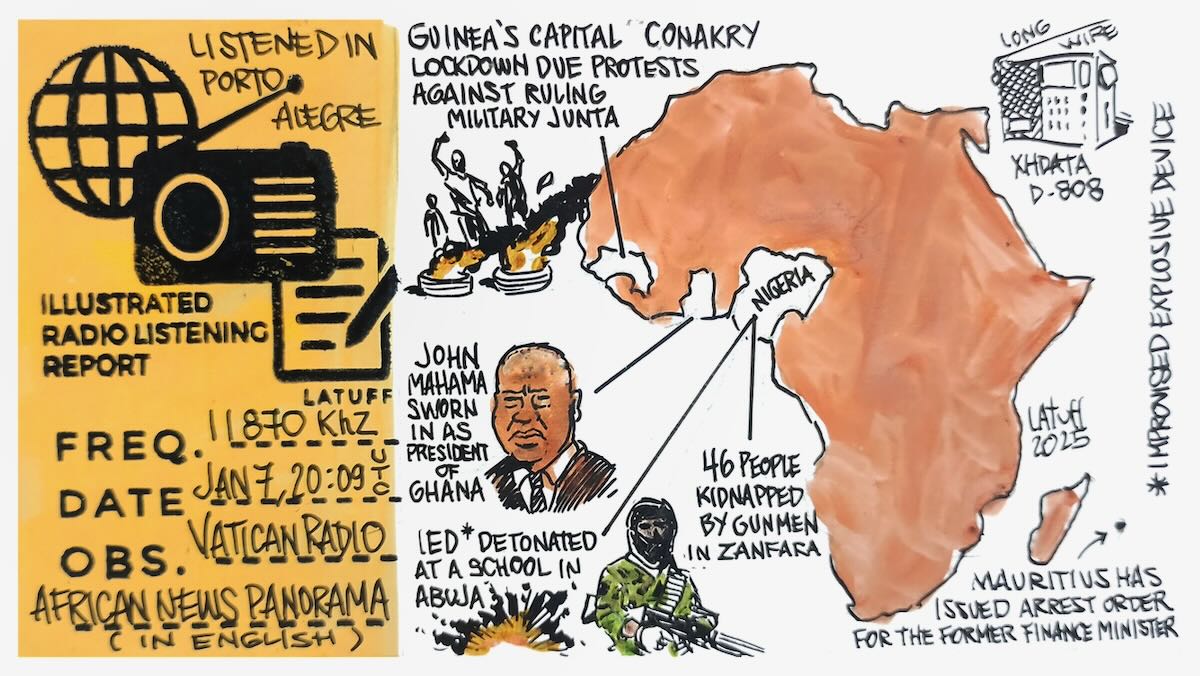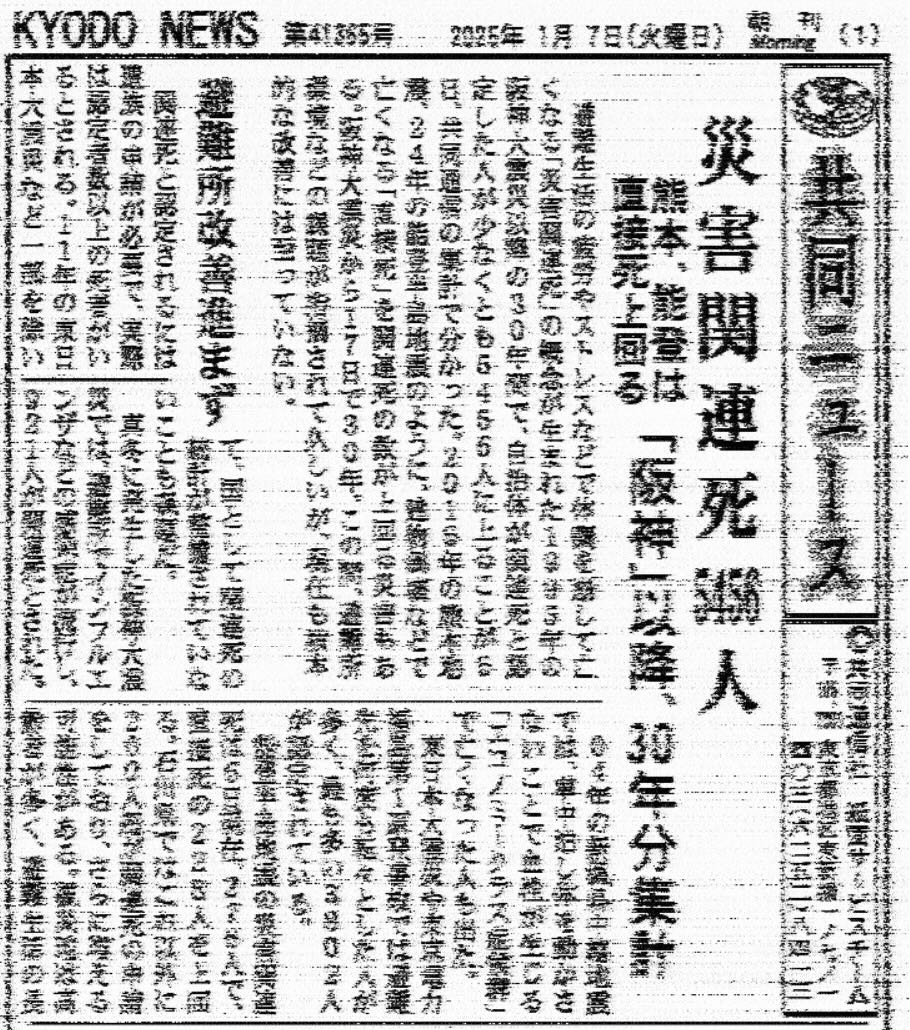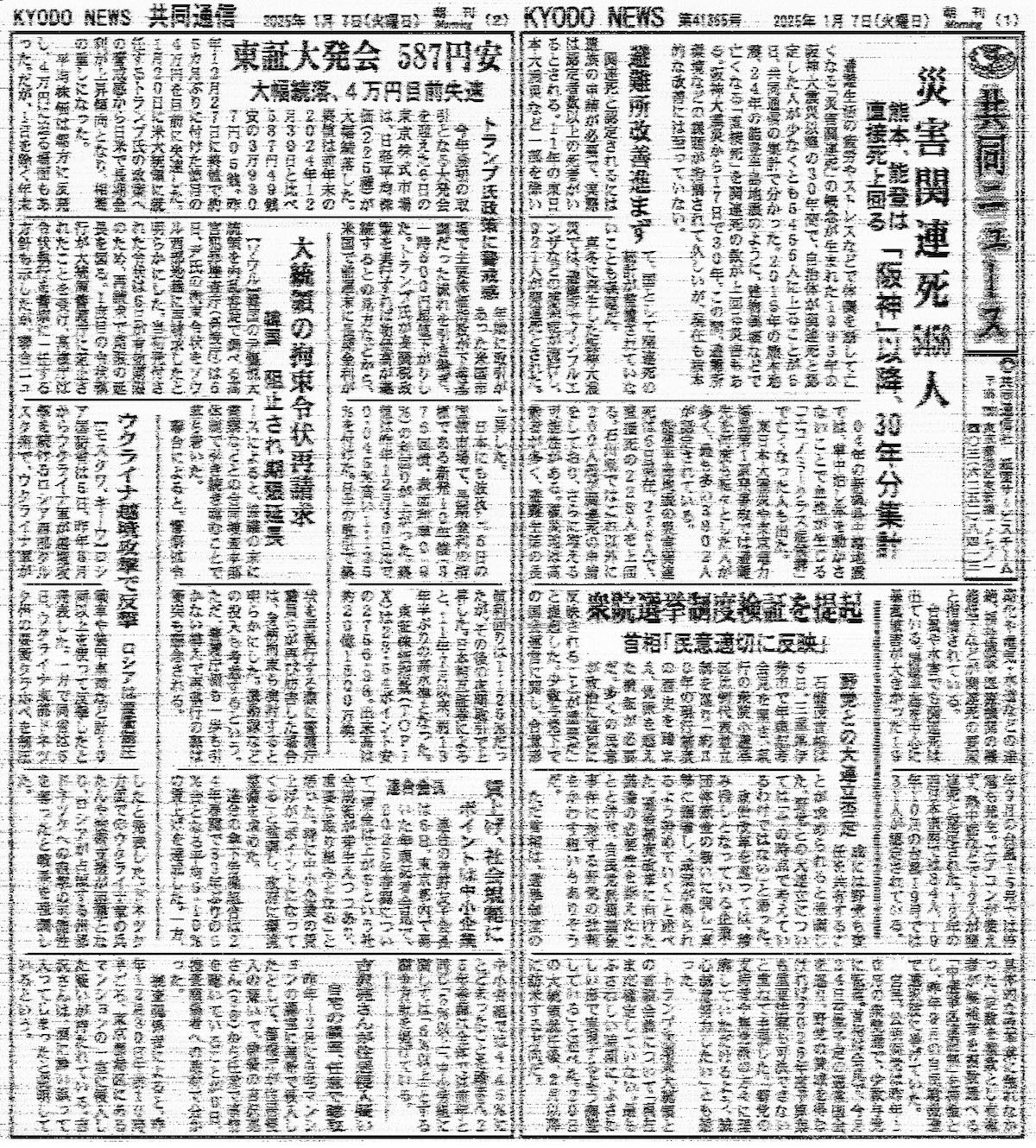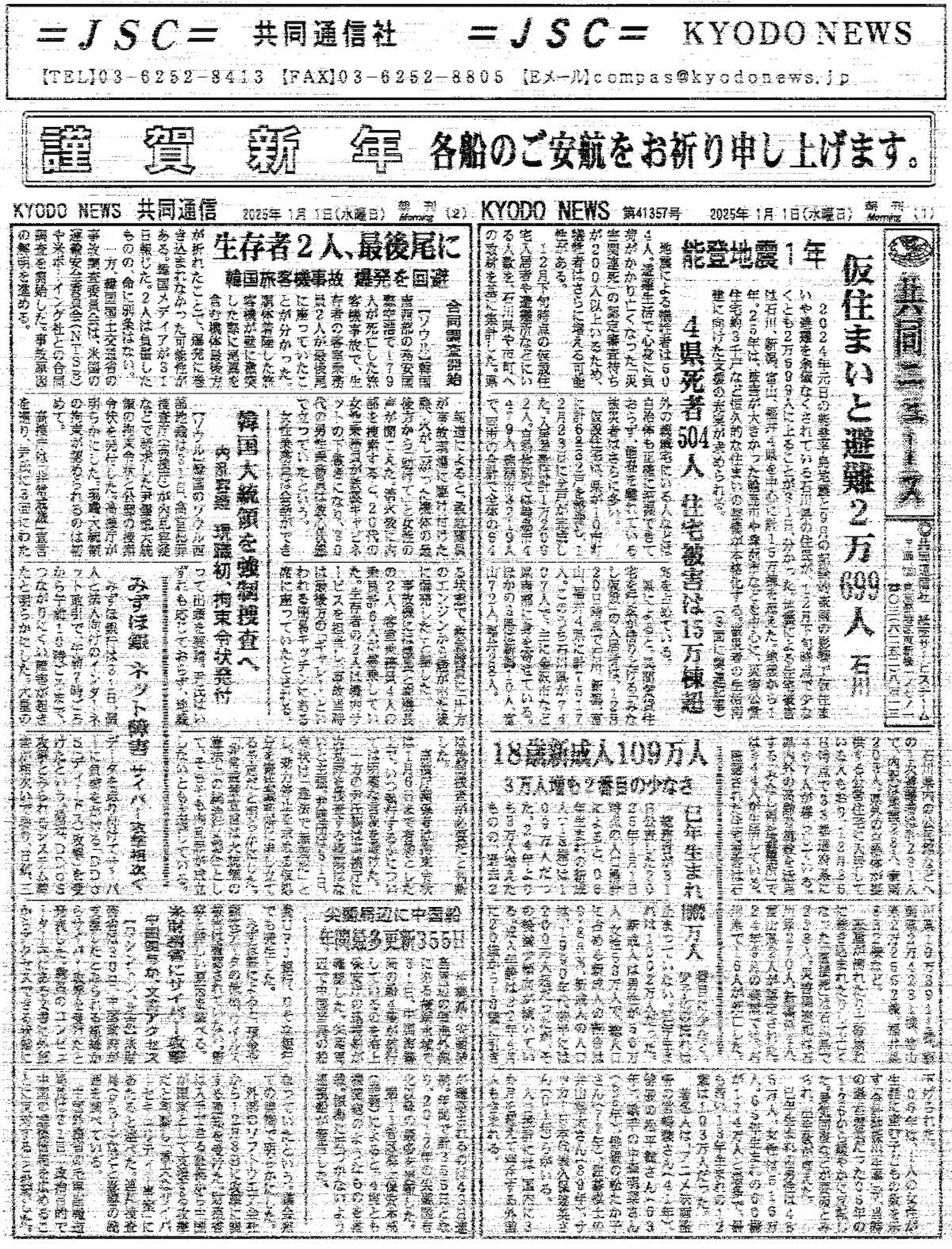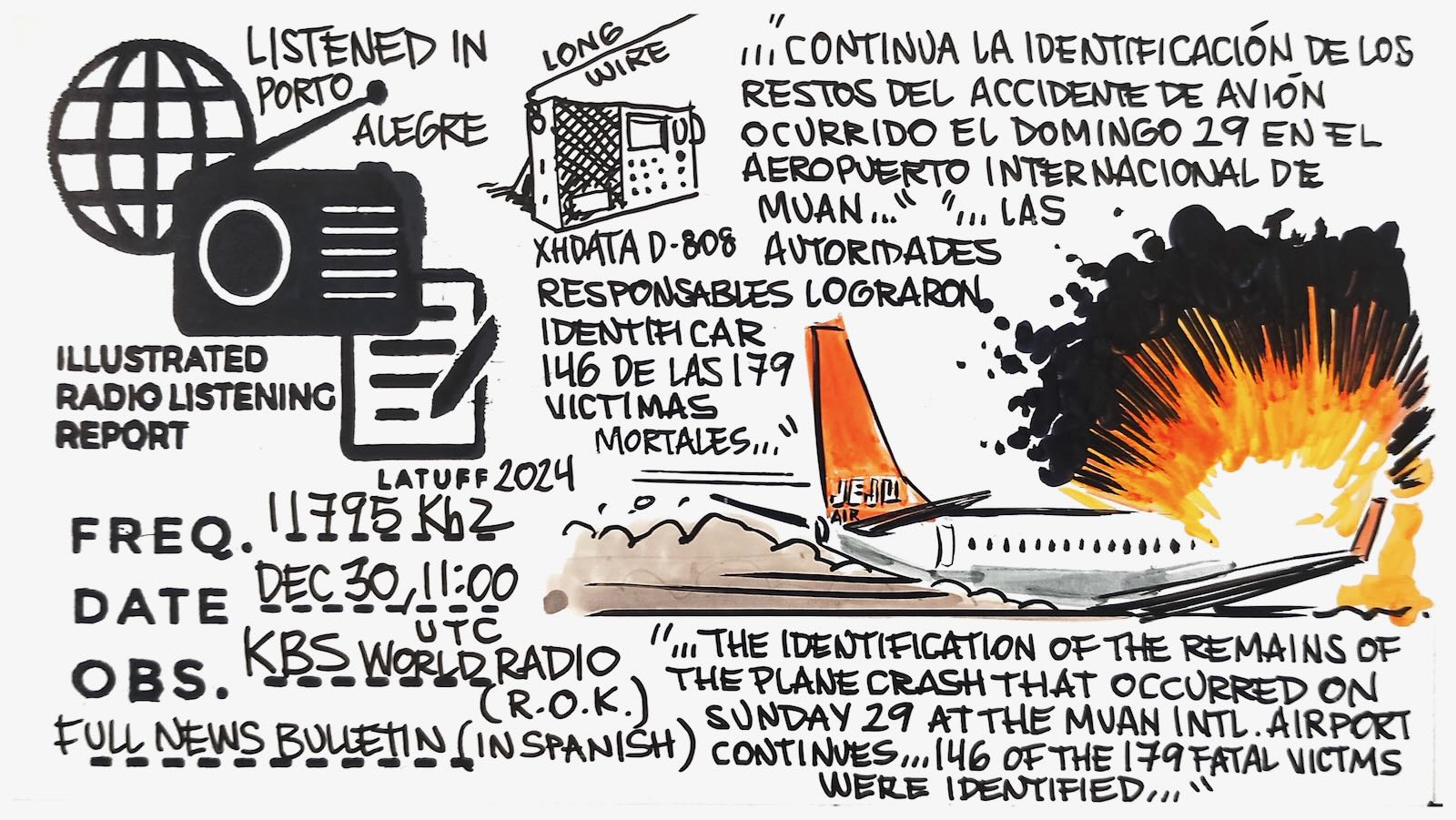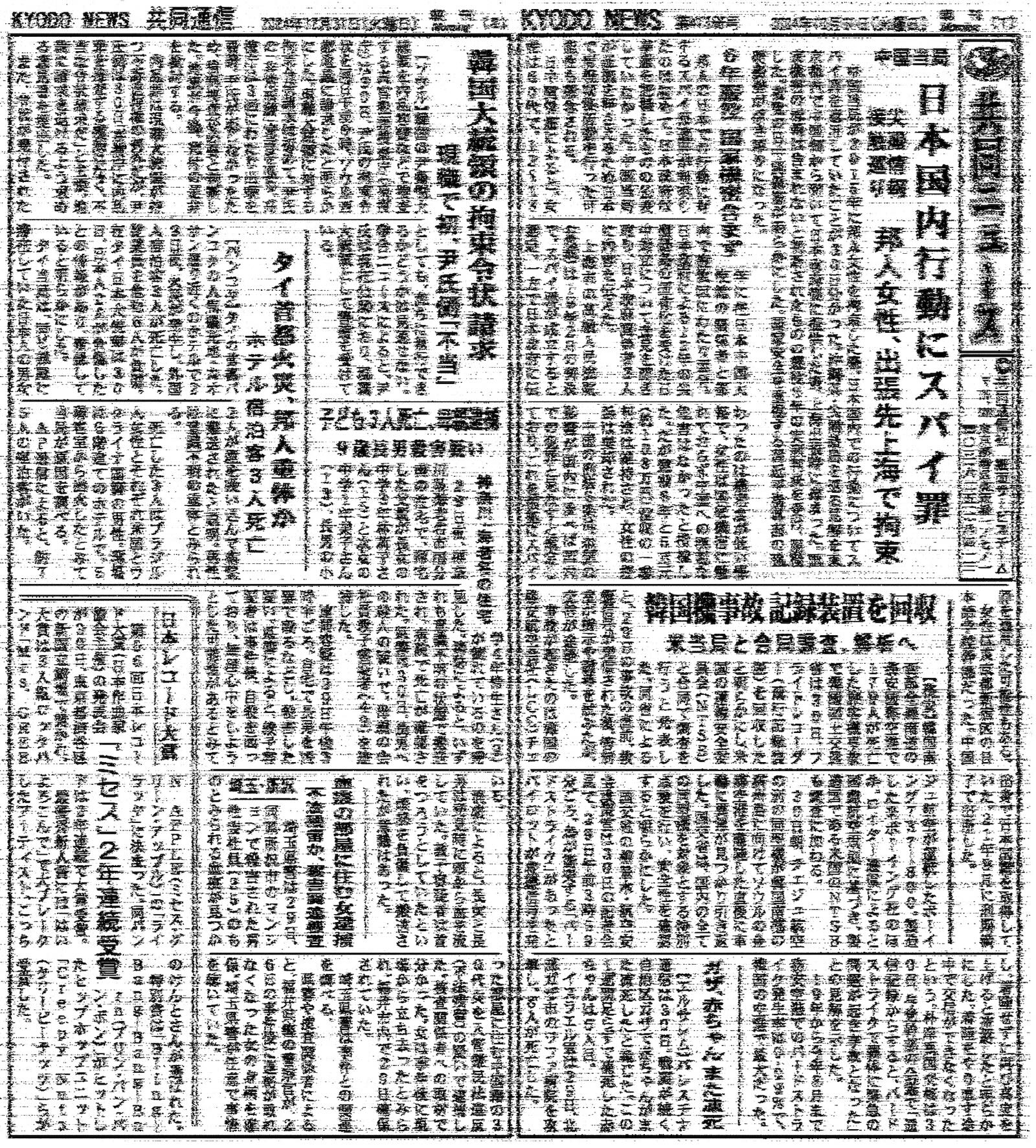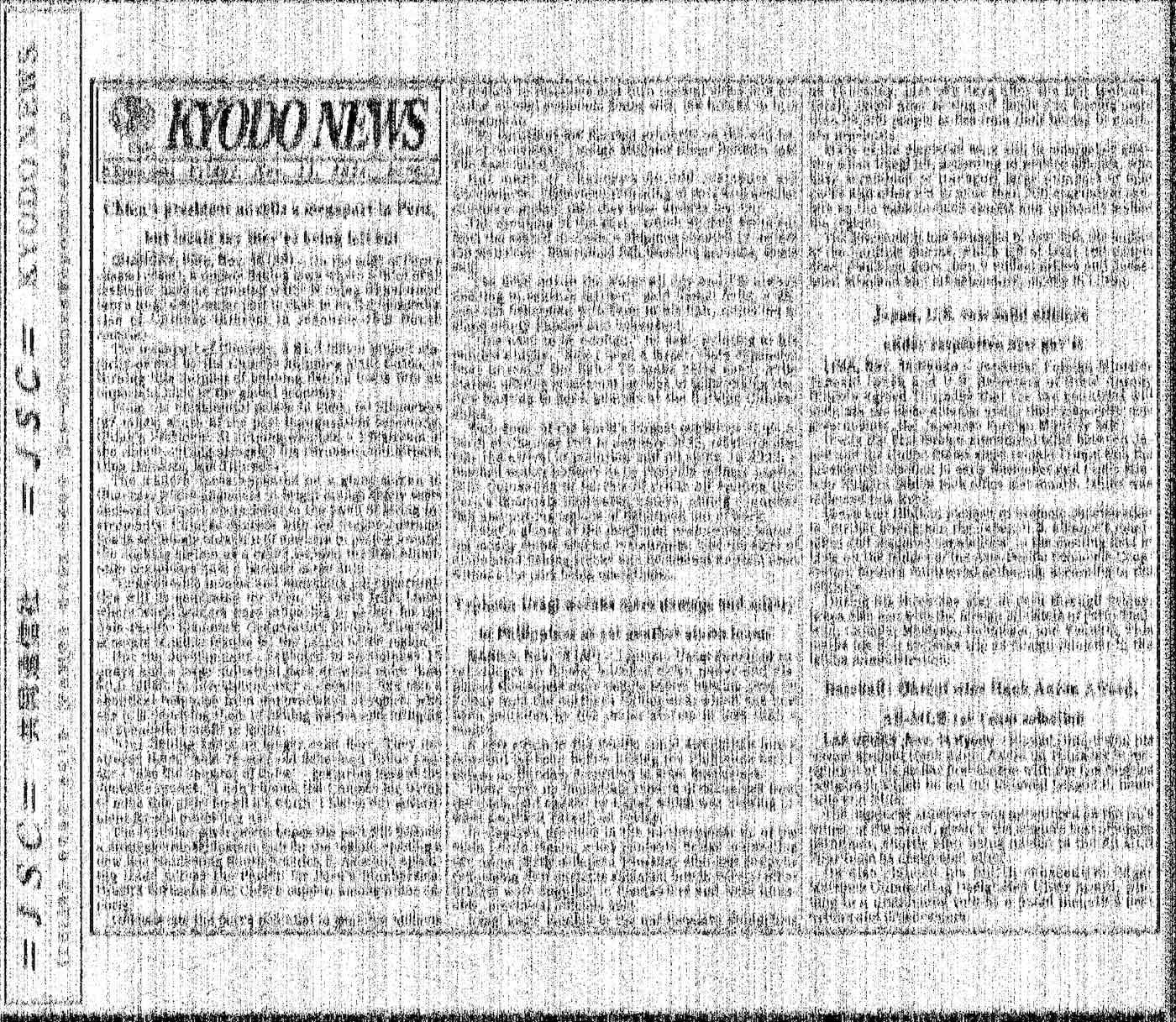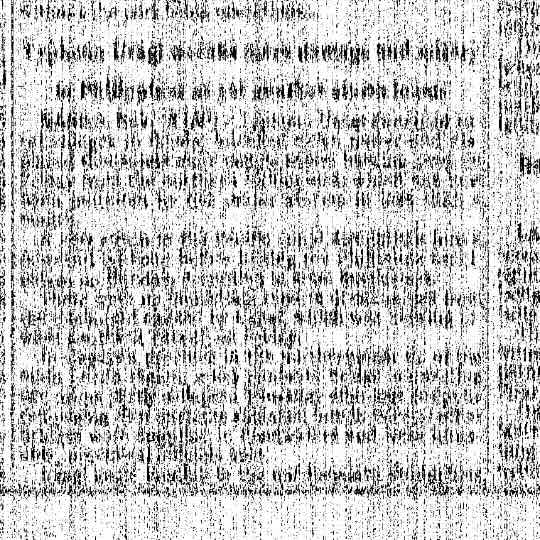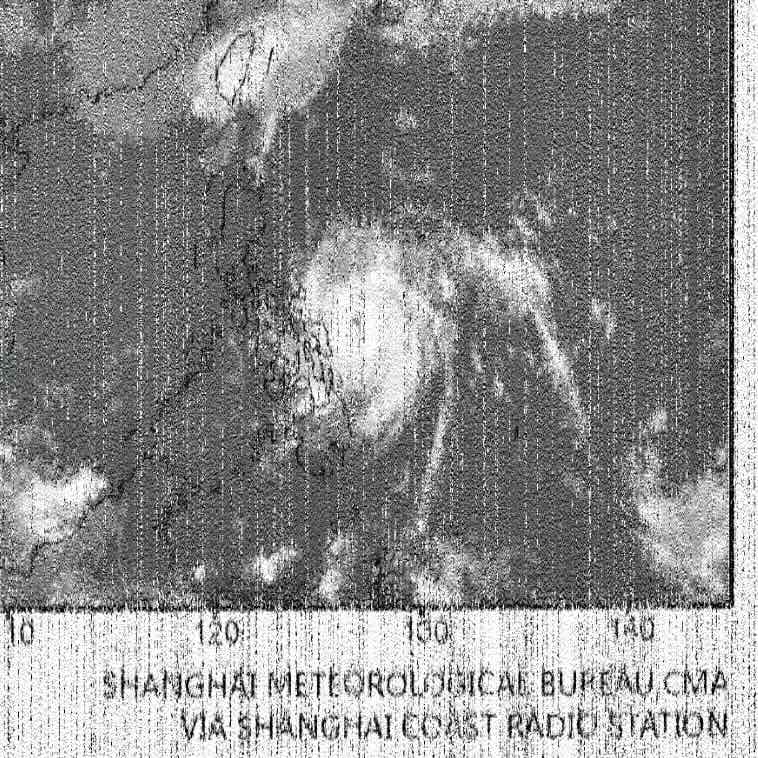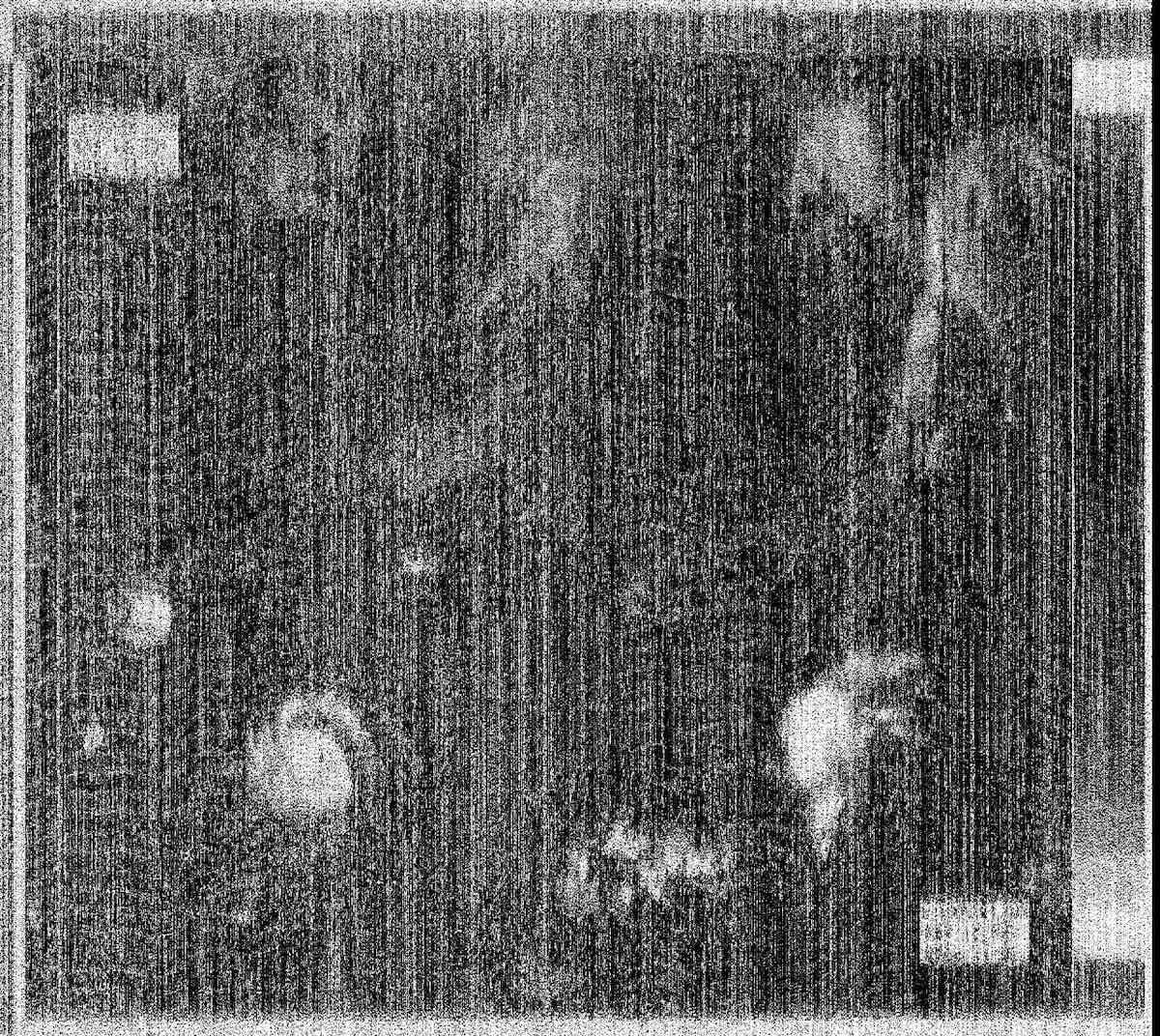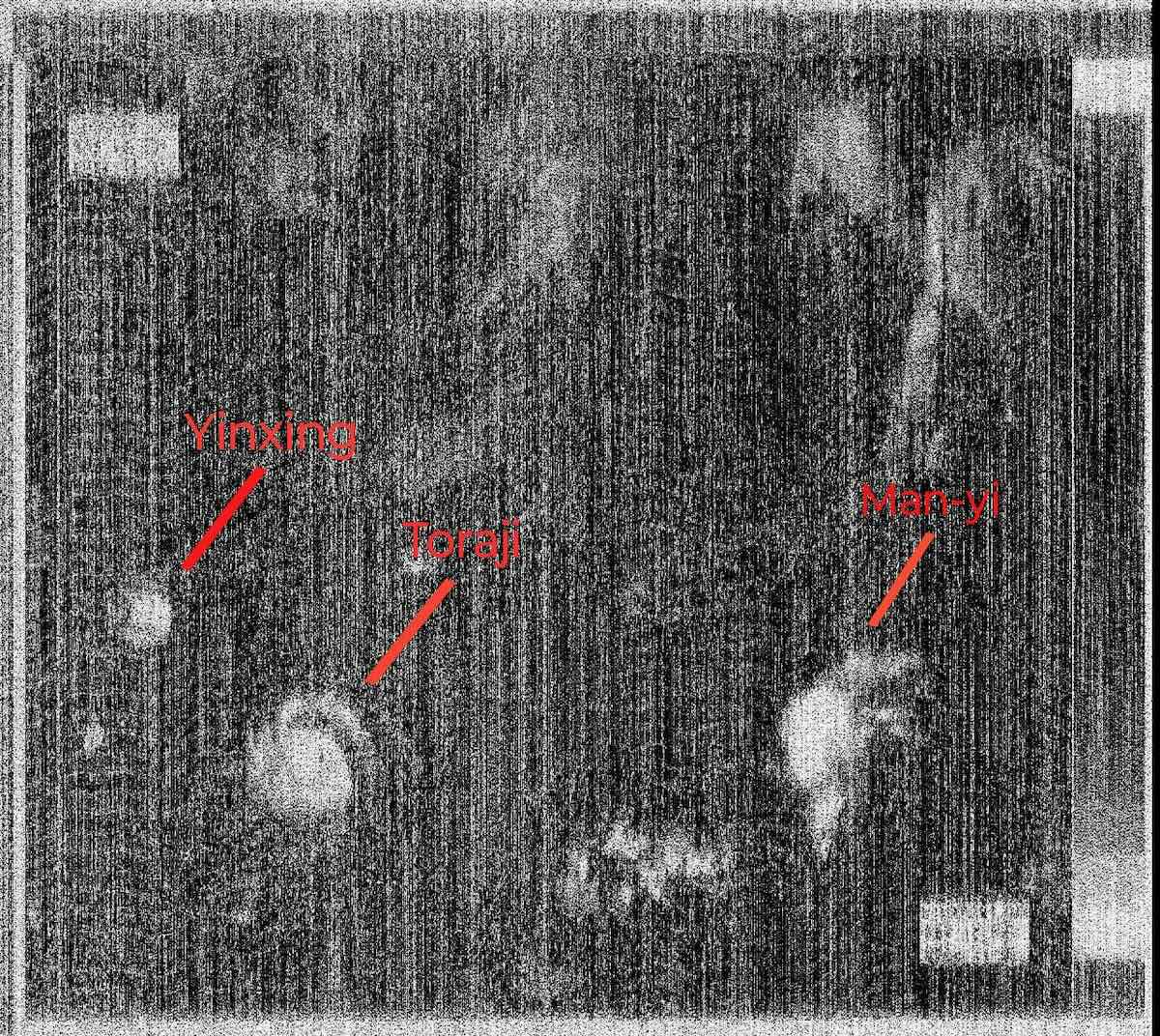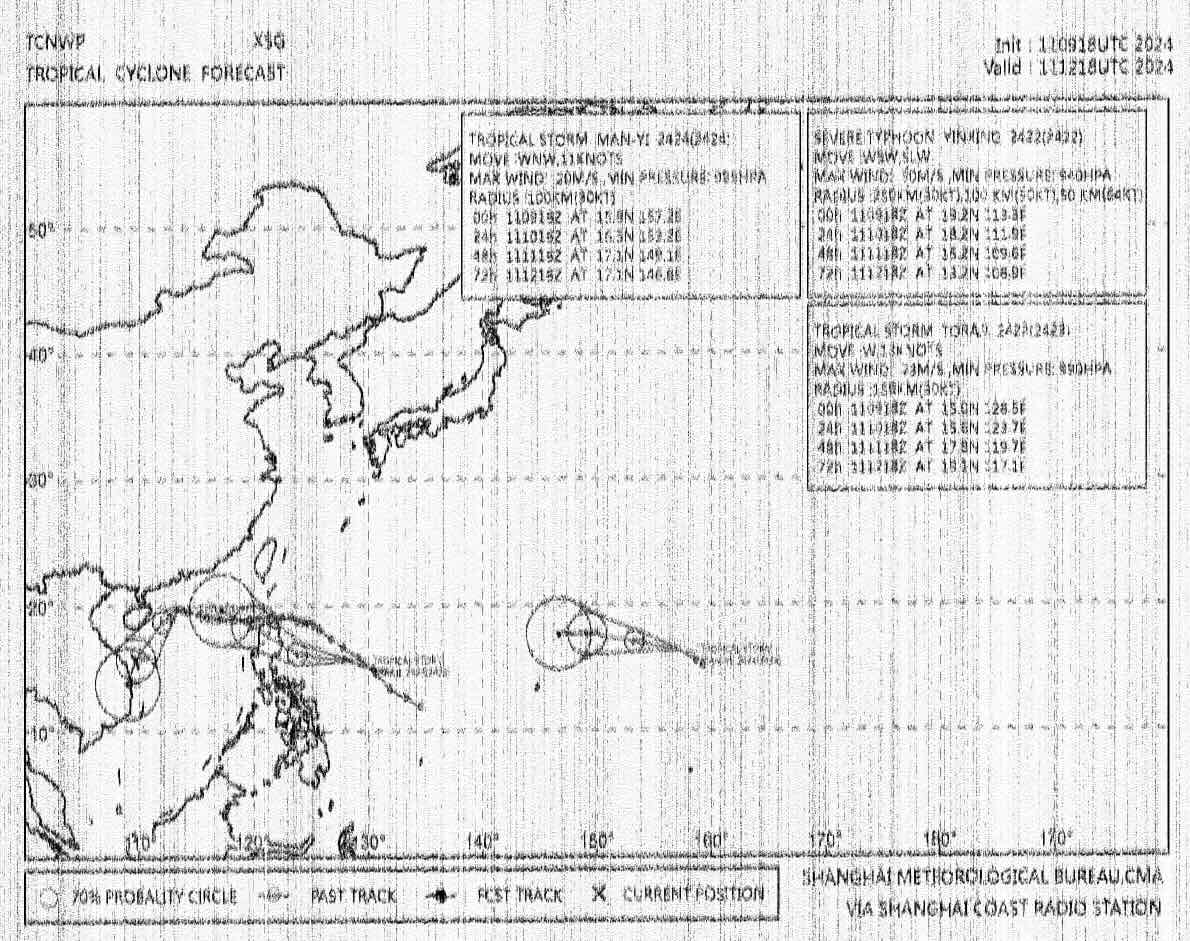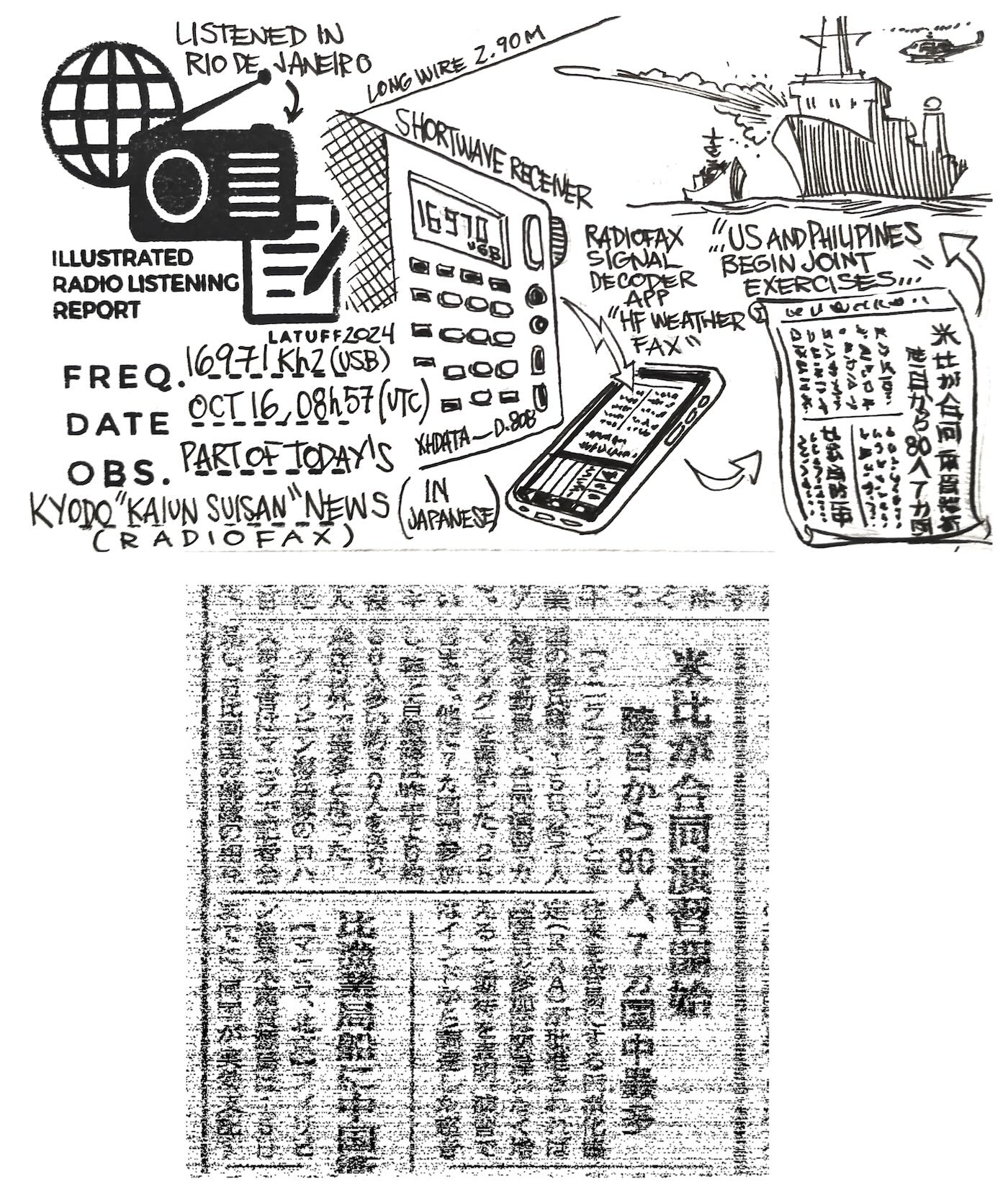Many thanks to SWLing Post contributor and noted political cartoonist, Carlos Latuff, who shares illustrated radio listening report of a recent Vatican Radio broadcast.
Carlos notes:
Vatican Radio’s African News Panorama, in English.
John Mahama sworn in as president of Ghana, Guinea’s capital lockdown due protests against military junta, explosive detonated in schools and kidnappings in Nigeria, arrest order for the Mauritius’ former minister of finance. Listened in Porto Alegre, Brazil.
Click here to view on YouTube.
Bonus: Kyodo News Radiofax
In 30 years, since the 1995 Great Hanshin quake, when the concept of “disaster-related deaths” was created (deaths caused by illness resulting from fatigue and stress while living in shelters) at least 5,456 people have been recognized as disaster-related deaths by local govts.
Kyodo News Morning Edition radiofax received in Porto Alegre, Brazil, Jan 7, 10h50 UTC, 16970 kHz.

